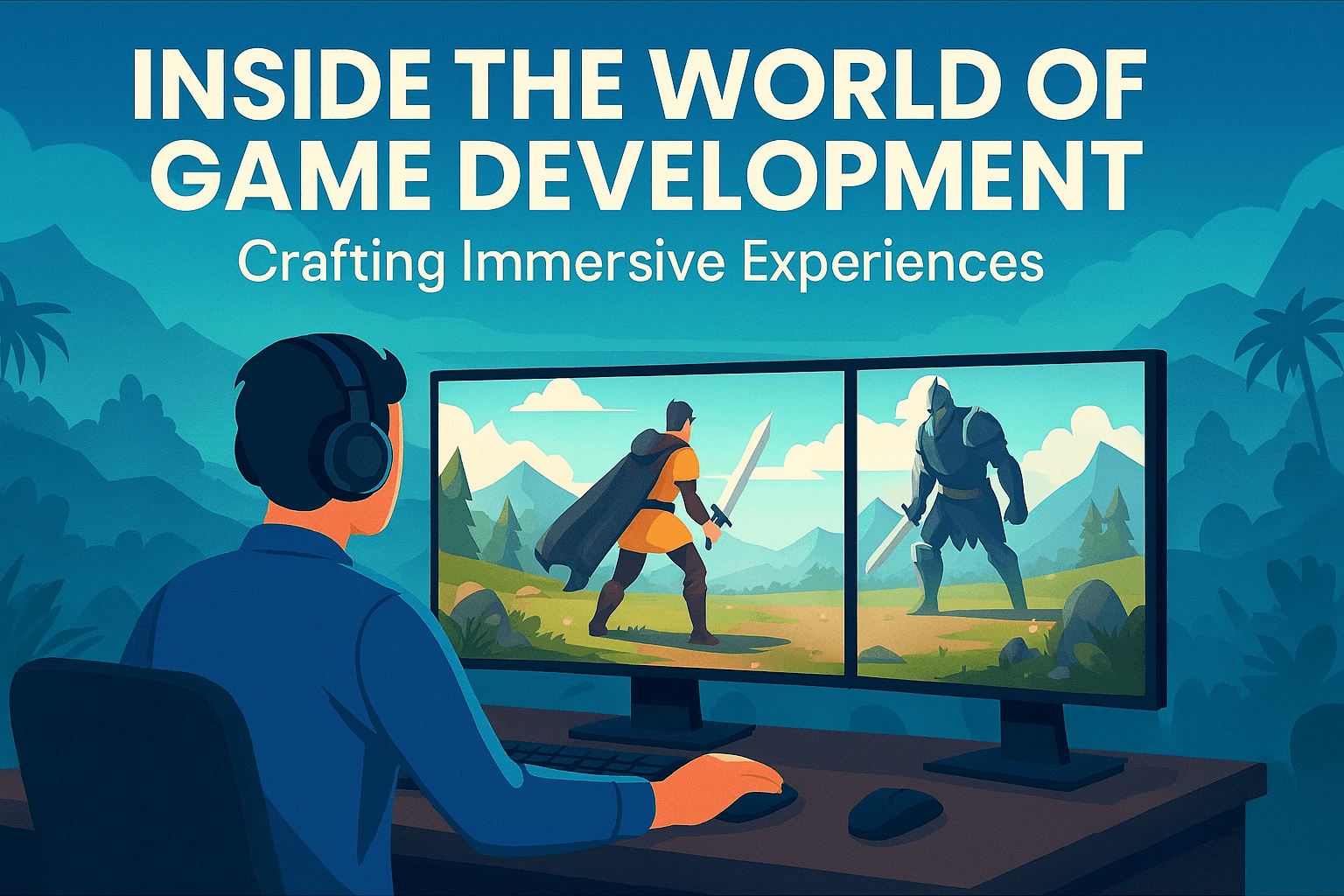Inside the World of Game Development: Crafting Immersive Experiences

Table of Contents
Game development is an intricate blend of creativity, technology, and psychology. At its core, it is about crafting experiences that captivate players, spark emotions, and foster engagement. From mobile puzzles to expansive RPGs, the industry continues to grow rapidly, driven by both technological advancements and shifting player expectations. Every game starts with a concept, but transforming that idea into a playable, engaging experience requires a carefully coordinated effort across multiple disciplines.
In exploring the landscape of mobile gaming, it becomes clear that success hinges not only on creative vision but also on execution. Many of the top studios pushing the boundaries of the industry are highlighted in resources such as https://medium.com/@thegamedevobserver/top-mobile-game-development-companies-in-2026-883265a88c2c, which provides insight into the strategies, technologies, and design philosophies that make these companies leaders in mobile game development. Observing their approaches offers valuable lessons for developers seeking to create immersive, high-quality experiences.
The Foundations of Immersive Game Design
Creating immersion is not just about graphics or sound—it is about making players feel that the game world is alive and responsive. Several key pillars support this experience:
1. Narrative Depth
Stories give players a reason to care about the world they are exploring. Whether through branching narratives, episodic content, or rich lore, a well-crafted story encourages emotional investment. Players are more likely to remember a game where their choices and actions feel meaningful.
2. Visual and Audio Cohesion
A visually stunning game can grab attention, but pairing visuals with dynamic audio creates a truly immersive experience. Detailed environments, realistic animations, and adaptive soundtracks respond to player actions and reinforce immersion. Games that achieve this balance often leave a lasting impression on players.
3. Engaging Mechanics
The heart of any game lies in its mechanics. These define how players interact with the game world and each other. Well-designed mechanics are intuitive yet challenging, rewarding skill while encouraging exploration. Developers must carefully balance difficulty and accessibility to ensure sustained engagement.
4. Community Interaction
Modern games often thrive on social engagement. Multiplayer features, online communities, and user-generated content foster connection, increase retention, and build lasting player loyalty. Developers who prioritize community feedback and interaction often achieve greater longevity and cultural impact.
Emerging Trends in Mobile Game Development
Mobile game development is rapidly evolving, with several trends shaping the landscape in 2026 and beyond. Studios are increasingly experimenting with technologies and design philosophies that redefine the player experience.
1. Cross-Platform Integration
Seamless play across mobile, console, and PC platforms is becoming the standard expectation. Players want flexibility, and cross-platform experiences expand social interaction, competitive opportunities, and overall reach.
2. Artificial Intelligence and Personalization
AI is transforming both game design and player experience. Intelligent NPCs, adaptive difficulty, and personalized content enhance engagement while offering unique challenges for each player. AI can also help developers generate content more efficiently, enabling richer game worlds with less manual effort.
3. Augmented and Virtual Reality
AR and VR integration is reshaping mobile gaming. AR experiences bring gameplay into the real world, encouraging exploration and interaction, while VR offers immersive worlds on the go. The combination of mobile convenience and immersive technology allows developers to push creative boundaries.
4. Monetization and Retention Strategies
Free-to-play remains dominant, but retention depends on thoughtful game economies and reward systems. Daily challenges, seasonal events, and progression mechanics keep players returning while balancing monetization in a fair, engaging way.
Challenges in Modern Game Development
While opportunities abound, developers face significant challenges. Technical constraints, market saturation, and evolving player expectations require careful planning and innovation. Mobile devices vary in performance and screen size, demanding optimization and scalability. Standing out in crowded marketplaces requires originality, high production values, and effective marketing. Developers must also manage teams efficiently, balancing creativity, deadlines, and resources to deliver polished, compelling experiences.
The Future of Immersive Experiences
Looking ahead, mobile game development promises to become even more engaging and personalized. Emerging technologies such as cloud gaming, AI-driven content, and AR/VR will continue to redefine immersion. Players will expect more than just entertainment — they will seek worlds that are emotionally resonant, socially connected, and adaptive to their actions.
Ultimately, the most successful games are those that blend artistry, technology, and player understanding. They are not just products but experiences that linger in memory, spark conversation, and shape culture. Developers who study industry leaders, experiment boldly, and embrace innovation are best positioned to create the next generation of immersive mobile games.
Support Ukraine against russian fascists! Defend Europe from horde! Glory to Ukraine! 🇺🇦

George Brown is a main editor in Bitgraph Network Team.